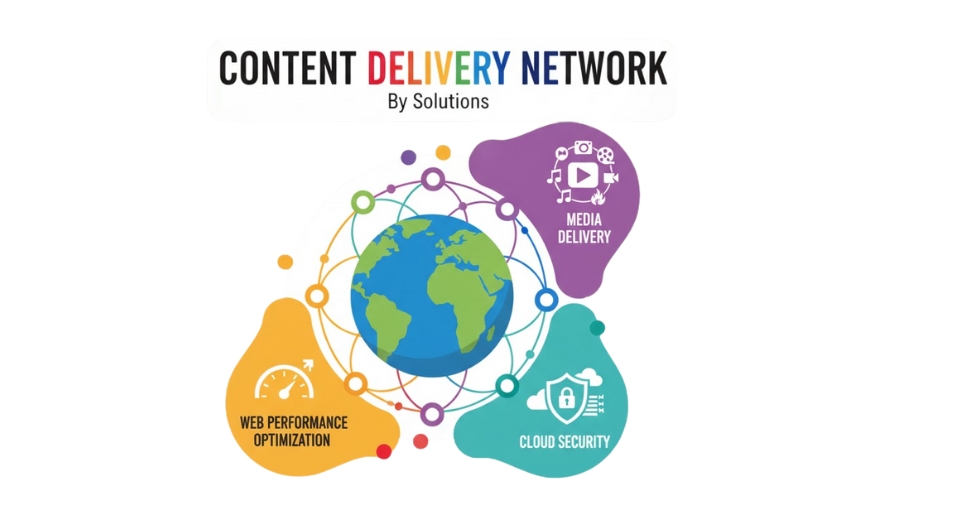Content Delivery Network Market To Reach $56.6 Billion by 2032

The global content delivery network market as depicted by Metastat Insight is drawing more attention as online participation is becoming the core of daily activities, work, education, and entertainment. Fast data access without interruption is the basic need for all streaming services, digital classrooms, cloud-based business processes, and online retailing. A video being buffered or a business dashboard taking a long time to load wastes time and irritates the user. The consumer's ever-expanding digital lifestyle is demanding nonstop speed and dependability from all their online interactions. During that overall transformation, demand for high-quality delivery of digital properties is increasing since the present-day viewers are not willing to wait for content to be delivered to their locations, on their device types, or under their connection's strength. This market is no longer viewed as a mere support function of the online world; instead, it is the one that controls the consumer content reaching moments of time when recognizing the value of speed is satisfaction.
Market Context
The transition of media consumption from physical to online and from real-time to on-demand, the extensive use of enterprise applications hosted in the cloud, and the emergence of platforms for remote collaboration have not only changed the manner in which users content but also changed the way organizations that serve users release their content. Traditional hosting approaches often lose grip on consistency of delivery to the audience when heavy user traffic occurs or when the audience is spread.
Furthermore, the situation is aggravated by the need for high-resolution video, advanced gaming, data-intensive applications, and the like, which in turn require a very sophisticated delivery system that eliminates latency and performance drops. Digital services have also been subjected to ever-increasing expectations concerning security, privacy, and resiliency to the traffic spikes that come with product launches, live events, or unexpected viral trends. The content distribution market, however, brings a strategic solution: advanced routing and distribution of data that not only reduces the load on main servers but also minimizes the overall delays thus increasing the user experience.
Function and Value
A contemporary content delivery network employs a vast and decentralized network of distribution sites to deliver digital assets to users from the closest possible point, thus lessening the distance between the request and the response. This structure skims over the traffic jams and makes the time for loading shorter. The system of scattered nodes also allows for the distribution of the load, thus easing the strain on the main servers in case of sudden traffic increases. Enhancing security is yet another aspect where the CDN adds value, as it keeps out the flood of harmful traffic and the unauthorized access attempts.
The benefits of performance are not limited to speed only: consuming less bandwidth, lower requirements for infrastructure, and increased stability all become part of the operational advantage. Media companies stream large amounts of video with hardly any interruptions, retailers provide excellent browsing during the promotional events, and software platforms offer quick access to intricate user interfaces. All in all, the content delivery approach not only has an impact on the speed of information flow but also on the control of customer satisfaction through businesses at the level of the deep.
Growth Journey
The adoption of CDN technology was gradual as it started with the companies that were trying to serve larger audiences, but at the same time, they needed a faster and better web content delivery. The gradual adoption of CDN through gradual invention was done by bringing in smarter routing algorithms, advanced traffic management, and deeper integration with cloud platforms.
This digital content distribution market move was from a usual single solution mostly adopted by media groups to a primary base for digital services. Features that keep on improving have made it possible to create delivery methods that can adapt according to the device being used, the state of the network, and the type of the content. Further, automation made it possible to change the configuration instantly, thus reducing the need for supervision. The digital transformation trend was getting stronger across several industries, including education, healthcare, retail, finance, and, hence, the demand also grew.
Regional and Global Patterns
At present, the adoption is very much associated with the digital infrastructure and the great content consumption in regions where advanced technologies are supported by numerous data centers and fast networks. Companies located in high tech areas very often consider the distributed delivery as a regular practice, which is the result of the various activities mentioned above like streaming, online gaming and enterprise traffic. However, the transition to a more sophisticated digital economy is the start of a new trend where internet usage is increasing.
The progress of such developing markets is further supported by the continuous e-commerce expansion, the growing smartphone penetration, and the large-scale cloud migration initiatives. Consequently, the demand for faster access and lower delay in content delivery is increasing as more organizations start to move their workloads to the cloud.
Challenges and Openings
Cost of deployment and integration can occasionally hold back smaller organizations, especially when the architecture spans multiple regions. Some firms hesitate due to unfamiliarity with optimization practices or uncertainty about setup complexity. Competition among vendors fosters rapid upgrades, which sometimes complicates selection of long-term partners. Regulatory requirements related to data transfer across borders may also shape how distribution strategies are configured.
However, new technologies open fresh possibilities. Edge computing, automation, and machine learning enhance routing decisions and reduce operational effort. Wider cloud integration enables even small companies to adopt advanced delivery strategies without heavy infrastructure investment. As software tools become easier to configure, barriers diminish and adoption becomes more accessible across industries.
Why This Matters Now
Digital interactions have shifted from optional to essential, touching education, healthcare access, financial management, shopping, entertainment, and professional collaboration. Delays or failures in content delivery interrupt not only convenience but also productivity and critical decision-making. Efficient delivery supports sustainability by optimizing bandwidth usage and reducing unnecessary transmission cycles. Advanced distribution plays a direct role in enabling innovation: richer media experiences, more immersive online events, and real-time digital platforms.
With global digital acceleration continuing at a rapid pace, the content delivery network market presented by Metastat Insight stands at the intersection of performance, security, and modern user expectations. Faster, smoother, and safer delivery will influence how organizations build trust and create value in the digital future.
Drop us an email at:
inquiry@metastatinsight.com
Call us on:
+1 214 613 5758
+91 73850 57479
 Agriculture
Agriculture
 Aerospace and Defense
Aerospace and Defense
 Automation & Process Control
Automation & Process Control
 Automotive and Transportation
Automotive and Transportation
 Banking & Finance
Banking & Finance
 Biotechnology
Biotechnology
1.png) Chemicals and Materials
Chemicals and Materials
 Consumer Goods
Consumer Goods
 Energy and Power
Energy and Power
 Food and Beverages
Food and Beverages
 Healthcare IT
Healthcare IT
 Information & Communications
Information & Communications
 Manufacturing and Construction
Manufacturing and Construction
 Packaging
Packaging
 Pharmaceuticals
Pharmaceuticals
 Electronics and Semiconductor
Electronics and Semiconductor
 Medical Devices
Medical Devices







 US: +1 3023308252
US: +1 3023308252






